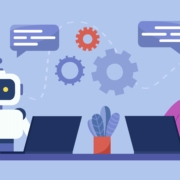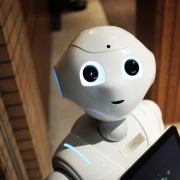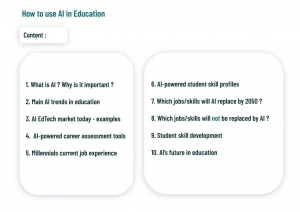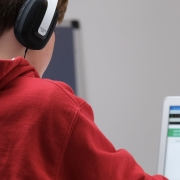Small Badges, Big Impact: Promoting the Value of Micro Credentials
From CYPHER Learning:
Are you tired of the same old routine of traditional education? Well the good news is that the way we learn has changed and we live in a world where we can quickly learn new skills on the go, without having to commit to a full-blown degree programme. This type of learning is called micro-credentialing.
What is micro-credentialing? Simply put, it’s a way that students can comprehensively learn specific skills or knowledge in a short period of time, without going through the long-term commitment of a full degree programme. Micro-credentials can come in the form of badges, certificates, or even digital credentials, and they’re becoming increasingly popular in education.
In a study conducted by the University of California, Davis, teachers who earned microcredentials “showed statistically significant gains in student achievement compared to those who did not participate in micro credentialing programmes.” [1]
So why is this approach to learning so popular? Well, first of all, it’s convenient, effective, and cost-effective. Microcredentials allow students to learn at their own pace, on their own schedule, and even in the comfort of their own home. Let’s face it, not everyone has the time or resources to enroll in a full degree programme. Additionally with skill sets and competency requirements changing so quickly, sometimes a full degree is not what is needed. Microcredentials can be the perfect way to reskill or upskill.
“According to a survey by the American Council on Education, 94% of employers believe that microcredentials demonstrate knowledge and skills that are relevant to their organisation.” [2]
Secondly, microcredentials are affordable and don’t require a long-term time commitment. Microcredentials are often much more affordable than traditional methods of education, making microcredential learning accessible to a wider range of individuals.
But the benefits of micro-credentialing don’t stop there. For students, microcredentials can help you stand out in a crowded job market, giving you a competitive edge over other candidates. For teachers, they can help you stay up-to-date with the latest teaching methods and technologies. And for administrators and organisations, they can help attract and retain top talent with specific skill sets, while also boosting overall productivity and efficiency. Let’s break down the benefits:
Benefits for Students:
– Visual proof of knowledge and skills
– Affordable and accessible
– Ability to upskill or reskill quickly
– Provides a sense of accomplishment
Benefits for Administrators:
– Better tracking and measuring of learning outcomes
– More targeted learning opportunities
– Improved data analysis and reporting
Benefits for Organisations:
– Encourages continuous learning and professional development
– Improved job performance and retention
– Supports talent development strategy
Although they are popular and pack a big punch, there are skeptics who argue that micro-credentials in higher education aren’t as valuable as traditional degrees and that the value of micro-credentials isn’t clear to everyone in the same way. Additionally, organisations have varying degrees of confidence in the idea of micro- credentialing. Even though a candidate has a micro-credential, the employer may still want further validation of that experience, and may not be convinced.
THREE WAYS TO PROMOTE THE VALUE OF MICRO-CREDENTIALS
Micro-credentials can be just as valuable as traditional degrees in today’s fast-paced, ever-changing job market, but to help students succeed, organisations and employers must embrace that micro-credentialing isn’t just a passing trend, but a valuable learning experience and earned competency worth investing in.
In a survey they did on micro credentialing, the Association of American Colleges and Universities found that “87% of employers believe that candidates with microcredentials are more well-prepared for the job market than those with only a traditional degree.” [3]
Still, many organisations must get past false assumptions that students aren’t committed enough to complete a full degree or that the shorter courses and programmes for micro-credentials don’t meet the high standards that we attribute to traditional degrees. Here are three ways to promote the value of micro-credentials:
Clearly communicate the value
Not everyone will understand the value and opportunity of micro-credentials so you need to create and share clear messaging outlining the curriculum, learning outcomes, programme length, instructor profiles, and other details. By communicating the level of difficulty, standards, and requirements, you can show both students and employers that the programme is worth investing in. Signed certificates and other types of formal documentation can make the programme appear more credible.
Build supportive messaging around the advantages of micro-credentials
Micro-credentialing is lifelong learning. Upskilling can be achieved with a reduced time investment. Maybe most importantly, the cost of micro-credentials supports equity and inclusion, and reduces learning barriers. With clear messaging, you can build confidence in micro-credentials that serve to corroborate that the student has the specific skills and knowledge required to be successful.
Partner up to improve the value of micro-credentials
Partner with employers to eliminate skills gaps and create credentials that meet specific industry needs. These partnerships are confidence builders for both employers and students and validate that micro-credentials are a worthy investment.
The truth is that most employers have a skills gap problem, and micro-credentials are the solution. They need skilled and knowledgeable workers from diverse backgrounds, and micro-credentials can address this need.
To learn more about micro-credentialing or to see what micro-credentialing looks like on a modern learning platform, go to www.cypherlearning.com.
CYPHER Learning® is leading the necessary disruption of learning platforms to unleash human potential with modern learning experiences. We exist to ignite lifelong learning passions through personalised, engaging, and limitless learning experiences for all. We give learning and development (L&D) professionals and educators more time to teach and train, build human connection into everything we do, and deliver tailored learning experiences that are meaningful and measurable.
REFERENCES
[1] EdSurge, “Microcredentials Could Be a Game-Changer for Teacher Professional Development”
[2] EdTech Magazine, “Microcredentialing in Education: What’s the Hype?”
[3] https://www.insidehighered.com/digital-learning/article/2019/05/08/employers-are-warming-microcredentials-survey-finds




















